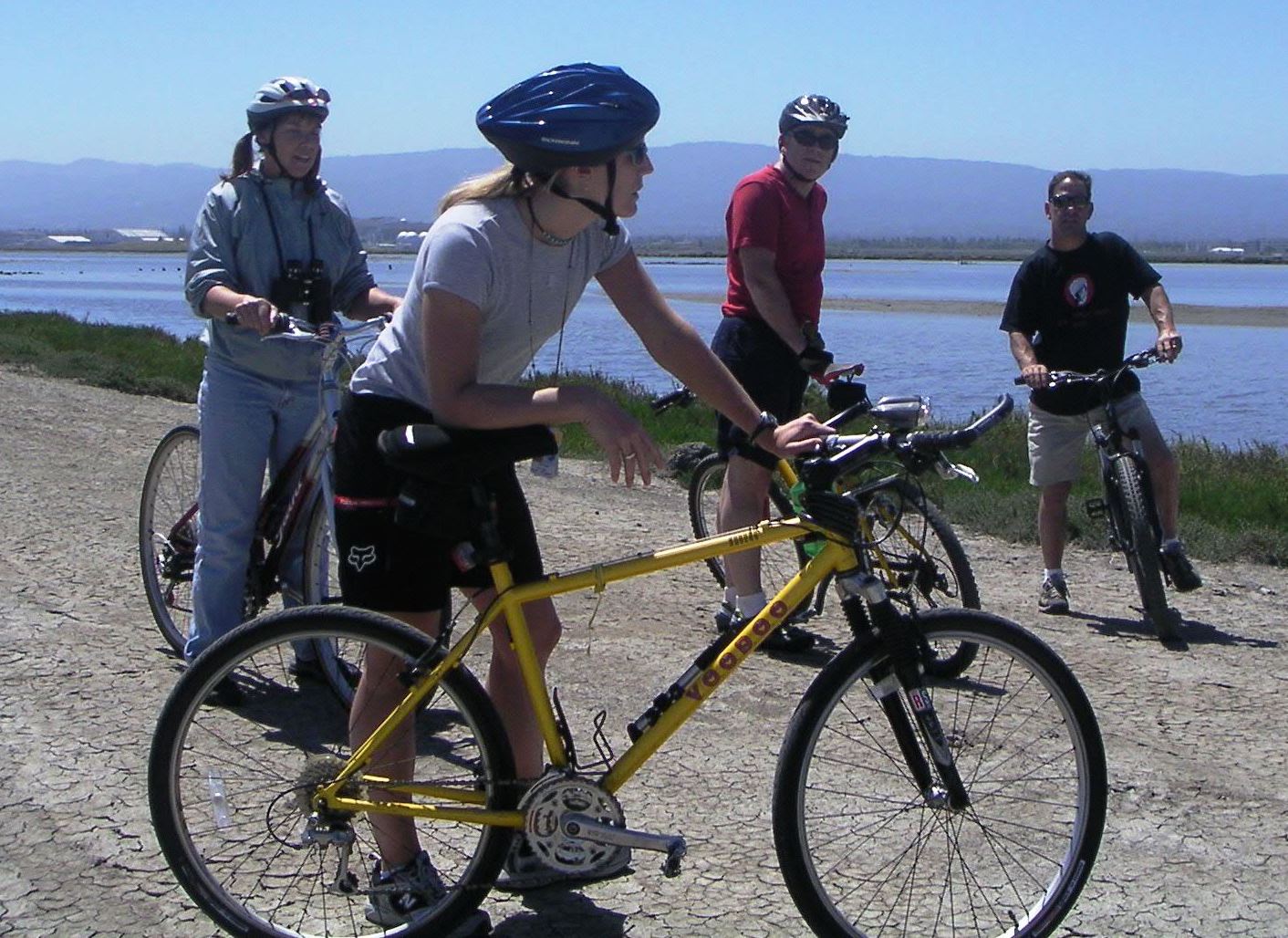Common Questions: Where Can I Bring My…
Where can I bring my dog? My drone? My bike? My…self?
These are common – and important – questions. The explanations and reasoning behind the answers are at least as important as the answers themselves. I’m trying to tighten up these entries, so let’s dive right in…
You cannot bring your dog anywhere into the locations that are part of the South Bay Salt Pond Restoration Project itself, even if dogs are allowed in the adjacent city or county parks. That’s because our Project takes place on parts of a National Wildlife Refuge and a State Ecological Reserve. These public lands are managed largely for wildlife, and even though public access and recreation are ALSO part of the mission of the federal and state agencies that run them, that access must be compatible with the needs of the wildlife. Even well-behaved dogs on leashes pose unacceptable risks to wildlife. For example, small animals and birds may smell, hear, or see a dog, perceive it as a predator, and scatter from nests or young, resulting in a lower percentage of them making it to adulthood. We also know that some dog owners are not 100% compliant about keeping their dogs on leashes when they are supposed to be, which adds further risk.
Similarly, you cannot pilot your drone within our project areas, for most of the same reasons. The noise, velocity, and erratic movements of a drone are novel stimuli to the birds and other wildlife that live in our restoration areas, and their presence can disturb or even prevent successful foraging, mating, or nesting behaviors. Even wildlife that has habituated (gotten used) to noises from nearby highways, airplanes, or boats that are common in our urban environmental can have trouble with drones because they are new. And, of course, accidents sometimes happen – like the drone that crashed in the Bolsa Chica Ecological Reserve and caused nesting terns to abandon almost 2,000 eggs. So they are prohibited…again, even when the adjacent property owners sometimes allow them.
But enough with the negativity!
You can bring your bicycle on most of the public access trails in the Project! A few of them are only open for seasonal hunting access, and some of what looks like recreational trails are actually designated only for maintenance and operations work, often because they are not improved enough for public safety purposes. But setting those exceptions aside, there are many terrific trails that are open to bicycles. The Bay Trail’s central spine design standards call for trails to be wide enough and surfaced for bicycles. (Of course, all project trails are compliant with the requirements of the Americans with Disabilities Act (ADA), so they are wheelchair-accessible too.)
Lastly, where can you bring yourself?
Well, anywhere in the publicly accessible trail networks at our pond complexes provided by the California Department of Fish and Wildlife and the U.S. Fish and Wildlife Service – or in many of the adjacent city, county, or regional park agencies/districts. Maps and descriptions of public trails and amenities at the Restoration are available here and here and here.
But I want to emphasize how important it is to stay on the trails! Please don’t venture down into what look like moonscapes – the dry salt pannes – to get a closer look at the colors in the remaining waters. Don’t wander into the marsh to see if there’s a bird there. Don’t try to test the cohesion of a mudflat at low tide. It’s harmful to the plants and wildlife, and it could be dangerous to you. My sincere thanks!


